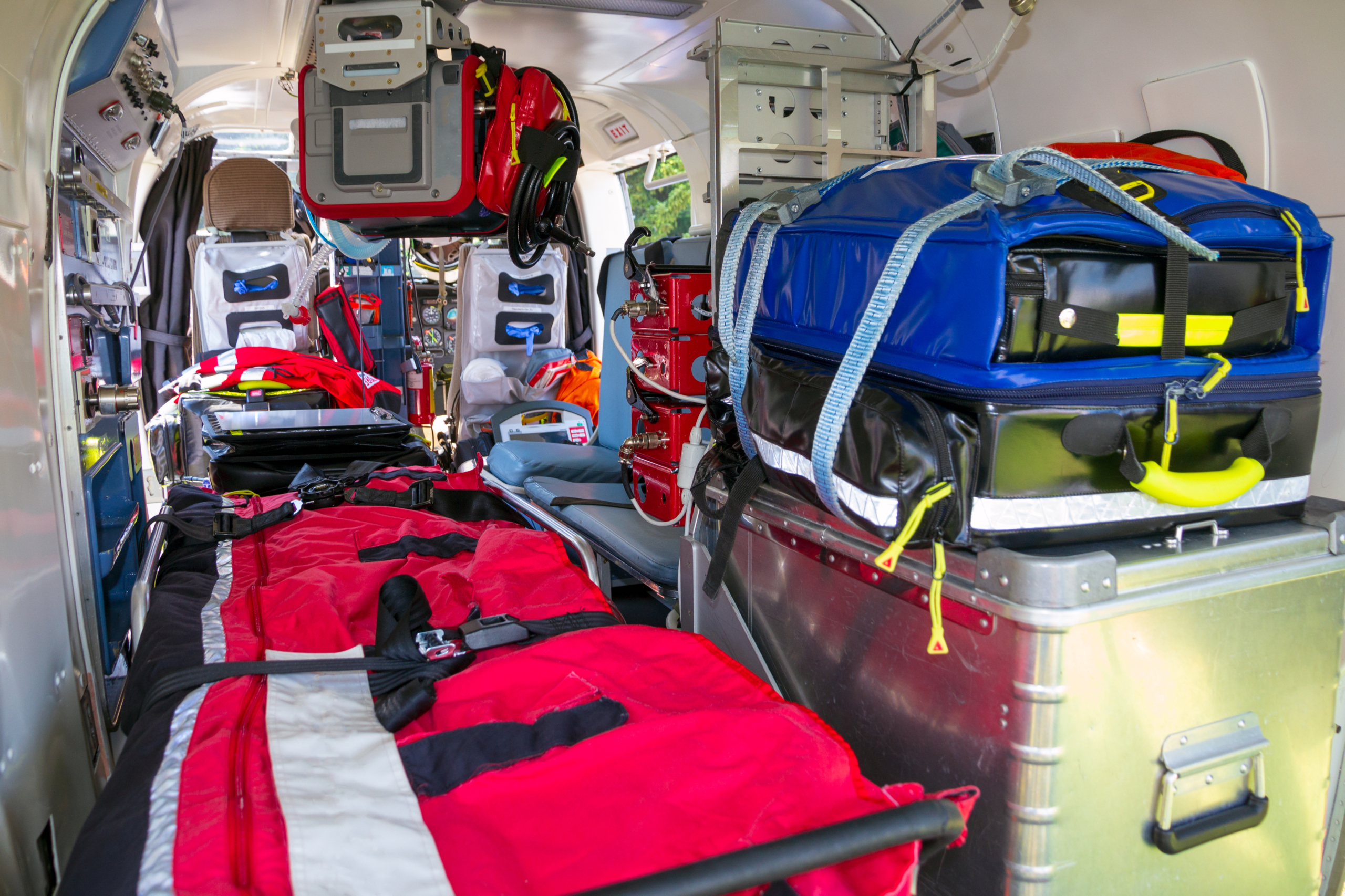Many providers in EMS often strive to and eventually attain their certification to transport patients via rotorcraft and/or fixed wing modes of transport. While these modes of transport are often looked at as the apex of one’s EMS career, non pressurized flight comes with not only emotional and intellectual stressors due to the inherent acuity of the patent but also physical stressors. These physical stressors of non pressurized flight can effect both patient and provider during transport.
Our atmosphere or the environment that extends from sea level to around 348 miles above sea level is made up of many different gasses. Nitrogen accounts for approximately 78% of the air we breathe, while oxygen makes up around 21%. The remaining trace gasses such as Argon, Helium, Carbon Dioxide, Krypton, Hydrogen, Neon and Methane account for less than 1%. While all percentages of these gasses remain largely constant, the density of these gasses varies based on the distance above sea level. The higher we go, the less available these gasses become. The atmosphere is not equidistant around the globe. Due to the earth’s rotation and gravitational pull, the atmosphere is is further away at the equator and gets closer as we near the poles. There are 5 distinct atmospheric layers that include the Troposphere (sea level to approximately 26,000 ft at the poles and 52,000 ft at the equator). This is where the majority of the air travel occurs. The remaining layers are the Troposphere, Stratosphere, Mesosphere, Thermosphere and Exosphere. As we increase in altitude, barometric (atmospheric) pressure decreases and effects the availability (density) of the gasses we breathe in.
While the overall concentration or percentage of these gasses remains constant, the ability to inhale them into our lungs becomes less. This explains why when one travels to a destination with a higher elevation or climbs a mountain, the fatigue level and work of breathing increases. Sports teams often train at high elevations to acclimate their athletes to performing at the higher elevations and that makes performing subsequently at lower elevations less fatiguing. Sea level is defined as 1 Atmosphere and all the combined gasses at this level are collectively measured at 760 mm/Hg (torr) or 14.7psi. If we travel to 18,000 ft, the same gasses are measured at 380 mm/Hg (torr) or 7.35 psi. This elevation can also be expressed as 0.5 atmosphere. Increases in altitude not only effect the gasses we breathe but also air containing orifices or cavities like ETT cuffs, colostomy bags, the stomach, the lungs, the ear drums, the intestines etc.
This is why we must always attempt to decompress the stomach on our intubated patient prior to non pressurized flight and check ETT distal cuff pressures during flight. Certain physiologic conditions such as pneumothoraces, bowel perforations and pneumocephalus (air in the cranial vault) can be worsened during these transports and need to be addressed prior to lifting off. Even healthy individuals can be negatively affected by changes in altitude during non pressurized flight especially in rotor craft. Primary stressors like G-forces, vibration, noise, rotor flicker, lower temperatures, lower humidity and the decrease in atmospheric pressure on the gasses we breathe will effect our body. Illnesses, certain medications, sleep deprivation, fatigue or exhaustion are all examples of conditions that will aggravate or exacerbate these primary stressors of flight. A useful mnemonic to remember the conditions that will make the primary stressors of flight worse is: D Drugs E Exhaustion A Alcohol Intake prior to flight T Tobacco H Hypoglycemia
While Critical Care Air Transport is often viewed as the pinnacle of the Emergency Medical Transport ladder, it does not come without some inherent and unavoidable negative effects. These stressors effect not only the provider but also the patients that we are caring for. A firm basic knowledge and understanding of the negative stressors of flight will prepare the HEMS or fixed wing Critical Care Provider to deal with these stressors with a pro active approach. Preventing, anticipating or aggressively treating these conditions can often improve patient outcomes and allow the caregiver to tolerate these altitude related effects on their own body. more effectively While many of these stressors can not be avoided, they can often be minimized by thinking ahead and assessing for possible flight related changes that effect the human body of both the patient and the provider.

